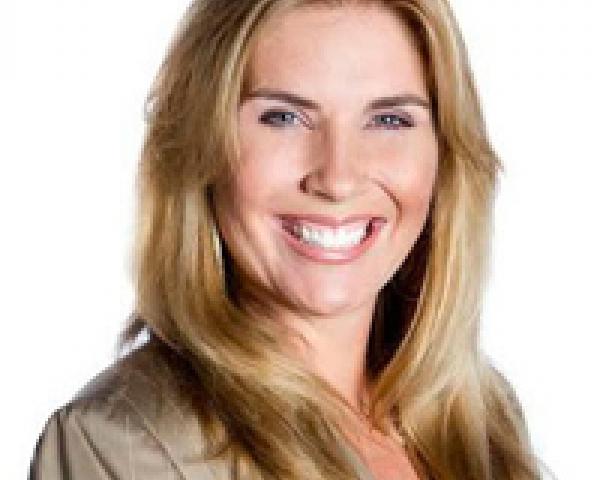Why Healthcare Must Be Transparent
Transparency is accelerating reductions in errors and accidents that kill or harm patients in hospitals, and much more is possible.

Transparency is accelerating reductions in errors and accidents that kill or harm patients in hospitals, and much more is possible.

Get Involved
Our authors are what set Insurance Thought Leadership apart.
|
Partner with us
We’d love to talk to you about how we can improve your marketing ROI.
|
Major corporations around the world are increasingly waking up to the fact that startups are becoming the key source of innovation for them.

Get Involved
Our authors are what set Insurance Thought Leadership apart.
|
Partner with us
We’d love to talk to you about how we can improve your marketing ROI.
|

George Kesselman is a highly experienced global financial services executive with a strong transformational leadership track record across Asia. In his relentless passion and pursuit to transform insurance, Kessleman founded InsurTechAsia, an industry-wide insurance innovation ecosystem in Singapore.
Every insurance sector player ought to ask: How should the value chain be reshaped by using the new technologies at hand?

Get Involved
Our authors are what set Insurance Thought Leadership apart.
|
Partner with us
We’d love to talk to you about how we can improve your marketing ROI.
|

Matteo Carbone is founder and director of the Connected Insurance Observatory and a global insurtech thought leader. He is an author and public speaker who is internationally recognized as an insurance industry strategist with a specialization in innovation.
A Trump administration may agree with state insurance regulators on debates occurring with newly established federal authorities.

Get Involved
Our authors are what set Insurance Thought Leadership apart.
|
Partner with us
We’d love to talk to you about how we can improve your marketing ROI.
|

Nick Gerhart served as insurance commissioner of the state of Iowa from Feb. 1, 2013 to January, 2017. Gerhart served on the National Association of Insurance Commissioners (NAIC) executive committee, life and annuity committee, financial condition committee and international committee. In addition, Gerhart was a board member of the National Insurance Producer Registry (NIPR).
If income equality is one of the key issues for insurance worldwide, won’t it also be one of the key drivers of industry change?

Get Involved
Our authors are what set Insurance Thought Leadership apart.
|
Partner with us
We’d love to talk to you about how we can improve your marketing ROI.
|
Although we are at the early stages of "reputation capital," we will soon be able to carry our reputation with us across online platforms.

 ...but more like this:
...but more like this:
 Most of us undoubtedly would leave the Airbnb in better shape than we would a hotel room. And that's the point of accountability in the sharing economy: It makes people behave better!
Accountability Through Reputation Capital
Rachel Botsman, one of my favorite sharing economy thinkers, has paved the way for how we understand accountability in the sharing economy through her concept of “reputation capital.”
In an age of mobile technology and sharing economy innovation, reputation is a tangible asset that can be managed and built. Although we are at the early stages of this, we will likely soon be able to carry our reputation with us across online platforms. Some have even argued that online reputation will be the new currency in the 21st century.
The point is that every sharing economy platform has some sort of feedback process. As a seller, your earning potential depends entirely on the management of your reputation.
See also: 9 Impressive Facts on Sharing Economy
As the sharing economy and its accountability foundation continue to grow and enter different aspects of our lives — I am thinking of healthcare and social causes — it's important to understand the complex concept of accountability, especially in a digital age where everything is recorded, stored in the cloud and then commented on a hundred times.
That's all for now, folks. Next time, we will talk about the implications of another sharing innovation that affects the insurance industry: home-sharing.
Most of us undoubtedly would leave the Airbnb in better shape than we would a hotel room. And that's the point of accountability in the sharing economy: It makes people behave better!
Accountability Through Reputation Capital
Rachel Botsman, one of my favorite sharing economy thinkers, has paved the way for how we understand accountability in the sharing economy through her concept of “reputation capital.”
In an age of mobile technology and sharing economy innovation, reputation is a tangible asset that can be managed and built. Although we are at the early stages of this, we will likely soon be able to carry our reputation with us across online platforms. Some have even argued that online reputation will be the new currency in the 21st century.
The point is that every sharing economy platform has some sort of feedback process. As a seller, your earning potential depends entirely on the management of your reputation.
See also: 9 Impressive Facts on Sharing Economy
As the sharing economy and its accountability foundation continue to grow and enter different aspects of our lives — I am thinking of healthcare and social causes — it's important to understand the complex concept of accountability, especially in a digital age where everything is recorded, stored in the cloud and then commented on a hundred times.
That's all for now, folks. Next time, we will talk about the implications of another sharing innovation that affects the insurance industry: home-sharing.
Get Involved
Our authors are what set Insurance Thought Leadership apart.
|
Partner with us
We’d love to talk to you about how we can improve your marketing ROI.
|

Robin Roberson is the managing director of North America for Claim Central, a pioneer in claims fulfillment technology with an open two-sided ecosystem. As previous CEO and co-founder of WeGoLook, she grew the business to over 45,000 global independent contractors.
Does wellness save money? I say no. The industry says yes. The difference is that I'm backing up my claim by offering a $2 million reward.

 To win the $2 million reward for yourself and the $1 million for the school district, you just need to prove (using the more-likely-than-not civil standard of proof), the following (to bend over backward to be fair, I will start out by offering to use only materials prepared by your side):
To win the $2 million reward for yourself and the $1 million for the school district, you just need to prove (using the more-likely-than-not civil standard of proof), the following (to bend over backward to be fair, I will start out by offering to use only materials prepared by your side):
Get Involved
Our authors are what set Insurance Thought Leadership apart.
|
Partner with us
We’d love to talk to you about how we can improve your marketing ROI.
|
For the record, automating a broken or deficient process in customer service does not constitute an improvement.

Get Involved
Our authors are what set Insurance Thought Leadership apart.
|
Partner with us
We’d love to talk to you about how we can improve your marketing ROI.
|

Donna Peeples is chief customer officer at Pypestream, which enables companies to deliver exceptional customer service using real-time mobile chatbot technology. She was previously chief customer experience officer at AIG.
Studies of NFL players, plus last Tuesday's votes in nine states, suggest marijuana will be a big issue in workers' comp soon. Here's how to prepare.

Get Involved
Our authors are what set Insurance Thought Leadership apart.
|
Partner with us
We’d love to talk to you about how we can improve your marketing ROI.
|
Are there qualities or attributes that enable the best salespeople to be persuasive? I have only been able to identify one.

Get Involved
Our authors are what set Insurance Thought Leadership apart.
|
Partner with us
We’d love to talk to you about how we can improve your marketing ROI.
|